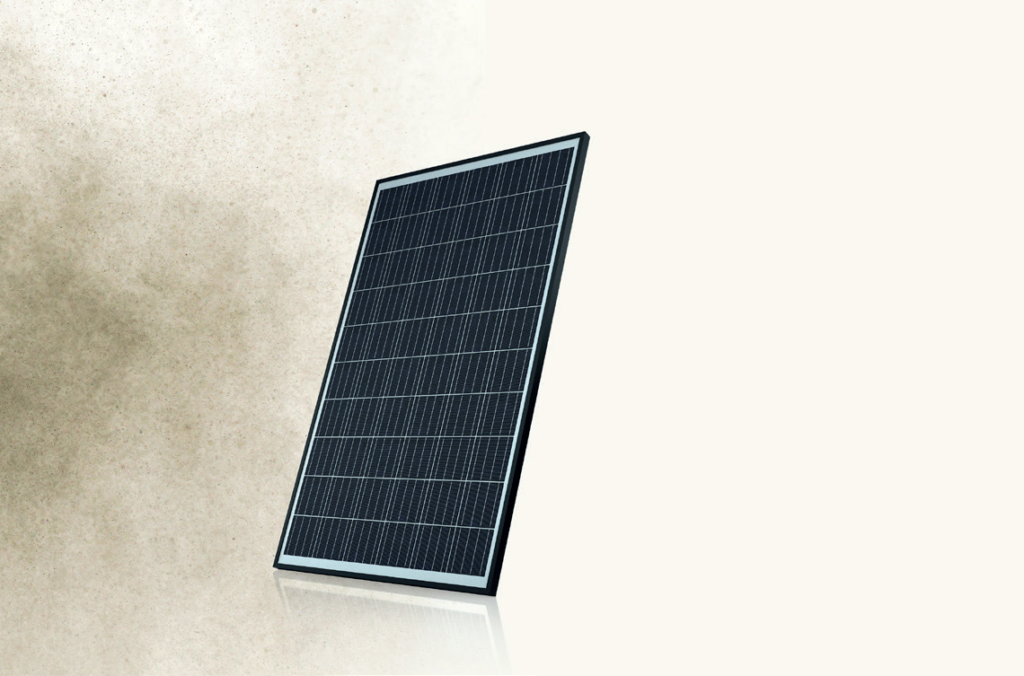Sand and Dust - Soiling
Sand and Dust - Soiling
A central aspect in desert regions is the topic soiling. Soiling is a gradual covering process of the module surface by fine particles (sand or dust). Due to this dust layer, incident
sunlight will be absorbed or reflected, and less light can be used by the solar cells. The energy yield of the module will be reducing.
Desert areas with high levels of airborne dust can also show high humidity levels, resulting in wet surfaces in the morning caused by dew, combined with drying during the day. These daily humid-dry cycles promote the so called cementation process, which significantly increases particle adhesion at the surfaces of PV modules and therefore greatly influence soiling. Cementation is one of the most important reasons for high dust accumulation on surfaces, since these crusts adhere too strong to be removed by natural cleaning through wind. As a result after cementation, the surfaces mostly have to be cleaned with high amounts of labour and water, which is time consuming and causes high costs.

In a current research project, J.v.G. Thoma works together with a glass supplier on an anti soiling solution for the module glass surface, to reduce soiling and cementation and thus reduce cleaning costs.

